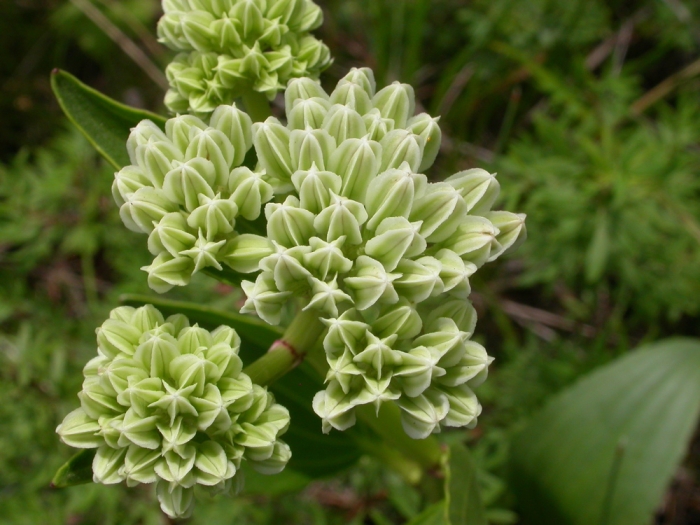Groovestem Indian Plantain
(Arnoglossum plantagineum)
Groovestem Indian Plantain (Arnoglossum plantagineum)
/
/

Pieter Pelser
CC BY 3.0
Image By:
Pieter Pelser
Recorded By:
Copyright:
CC BY 3.0
Copyright Notice:
Photo by: Pieter Pelser | License Type: CC BY 3.0 | License URL: https://creativecommons.org/licenses/by/3.0 | Uploader: CarolSpears | Publisher: Wikimedia Commons | Title: Arnoglossum_plantagineum_3.jpg | Notes: from [[w:File:ArtemisiaCalifornica-GaviotaCA.jpg]] ([[Commons:CommonsMover|CM]]) |














































Estimated Native Range
Summary
Arnoglossum plantagineum, commonly known as Groovestem Indian Plantain, is a deciduous perennial herb native to moist meadows, prairies, and open woodlands in the Central United States and Ontario, Canada. It can grow up to 100 cm (40 inches) tall and spreads weakly through underground rhizomes. The plant features ovate to oval-shaped leaves that are up to 17 cm wide with long petioles and five to seven nearly parallel veins. On flowering plants, the erect, unbranched stems are angled, grooved, and hairless. Leaves diminish in size up the stem, becoming more broadly egg-shaped with coarser teeth on the margins and shorter stalks. The flowerheads are white or greenish, typically with five flowers per head, and are grouped into a branched, flat-topped inflorescence that blooms in late summer.
Groovestem Indian Plantain is valued for its tall, stately form and its ability to thrive in wet conditions, making it suitable for rain gardens and naturalized areas. It is also used in prairie restoration projects and as a border plant in gardens that can provide the high moisture levels it requires. The plant prefers full sun to part shade and does best in soils with slow or standing drainage. While it is not commonly afflicted by diseases, it can be susceptible to root rot if the soil is not adequately moist. It is not known to have aggressive roots or other significant problems.CC BY-SA 4.0
Groovestem Indian Plantain is valued for its tall, stately form and its ability to thrive in wet conditions, making it suitable for rain gardens and naturalized areas. It is also used in prairie restoration projects and as a border plant in gardens that can provide the high moisture levels it requires. The plant prefers full sun to part shade and does best in soils with slow or standing drainage. While it is not commonly afflicted by diseases, it can be susceptible to root rot if the soil is not adequately moist. It is not known to have aggressive roots or other significant problems.CC BY-SA 4.0
Plant Description
- Plant Type: Herb
- Height: 2-5 feet
- Width: 0.5-1 feet
- Growth Rate: Moderate
- Flower Color: White
- Flowering Season: Summer
- Leaf Retention: Deciduous
Growth Requirements
- Sun: Full Sun, Part Shade
- Water: Medium
- Drainage: Medium
Common Uses
Bee Garden, Bird Garden, Butterfly Garden, Deer Resistant, Low Maintenance
Natural Habitat
Moist meadows, prairies, and open woodlands
Other Names
Common Names: Groove-Stemmed Indian-Plantain, Prairie Indian-Plantain, Tuberous Indian-Plantain, Arnoglossum, Arnoglosse Plantain, Cacalie Tubéreuse
Scientific Names: , Arnoglossum plantagineum, Cacalia plantaginea, Cacalia tuberosa, Senecio nuttallii, Mesadenia tuberosa, Cacalia pteranthes, Conopholis tuberosa, Conophora tuberosa, Mesadenia paniculata
GBIF Accepted Name: Arnoglossum plantagineum Raf.